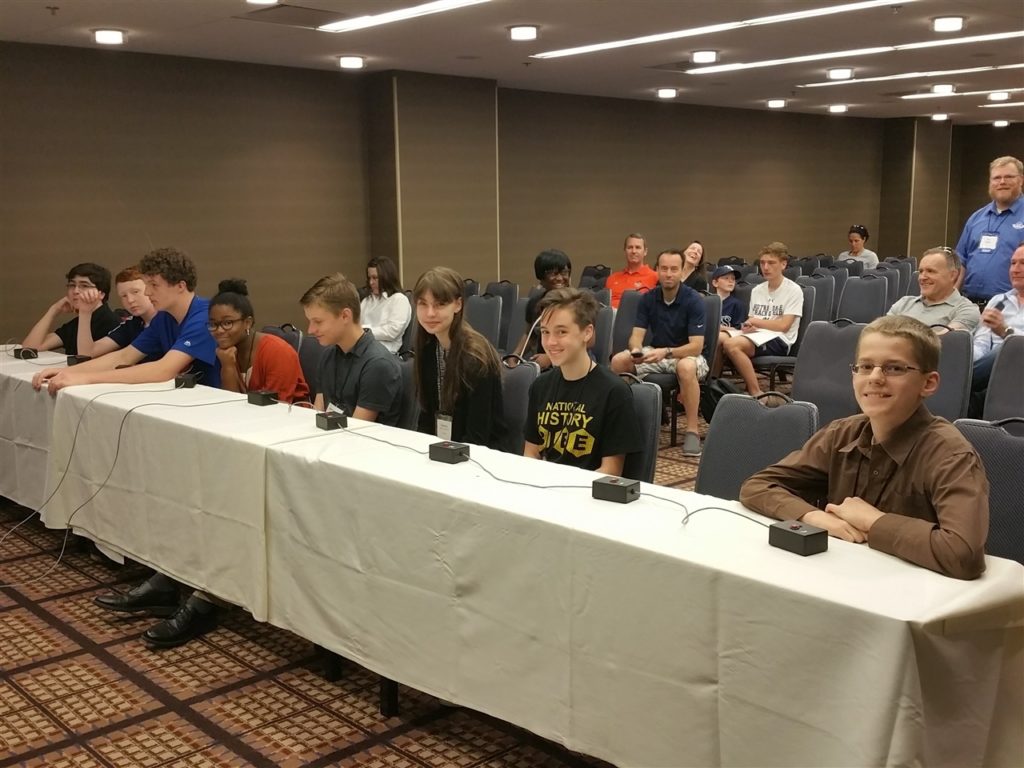March is Women’s History Month—a time where we “join in commemorating and encouraging the study of, observance and celebration of the vital role of women in American History.” It’s also the month when many regional competitions of the History Bee take place around the country—and after witnessing some Regional History Bee sessions, I’m beginning to think they missed the previous memo.

I sat through two 50-question sessions last year where contestants got to “buzz in” with an answer to a question played via audio recording. I noticed quickly that not a single question had a female historical figure as the answer, though sometimes they appeared as “hints” to a question about a male figure. Questions about historical figures of color and global history were similarly disappointing: Questions dealing with Native Americans were about Sacagawea, but only tangentially; questions about India had Taj Mahal as the answer if it was a building, and Mahatma Gandhi if was a person; Black history in the U.S. was almost entirely confined to Martin Luther King, Jr.
The young competitors that day learned that while women and people of color have played the role of supporting characters, they have hardly ever occupied the main roles in history. That lesson is a false one, and the Bee should’ve done better than to reinforce it.
An inordinate number of questions during these sessions also had to do with wars and white male military figures. As a sociologist, I don’t believe that boys have an overwhelming natural tendency to prefer wars and violence, but I do believe that they have been socialized to see these topics as “masculine” topics—and thus, that they have “an edge” when it comes to such content.
This was only part of the problem I had with the “buzzer round,” though. Content can change quite easily at a History Bee—but the format of this session at the Regionals had the sociologist in me wincing, too.
I watched my daughter—one of only two girls in the crowd of 10 participants at the History Bee Regionals—sit patiently during the buzzer round, listening to the questions, while the boys buzzed in, interrupting with an answer sometimes as early as a couple of seconds in. They would buzz in even when it was clear that they hadn’t understood the question. But the girls only buzzed in a couple of times through the 25 questions in each round, and only ever did so once the entire question had been read. Not a single girl “interrupted” the question.
When the boys got a question wrong, they would look around, laugh, shrug it off and then waste no time buzzing in for the next question. One boy kept buzzing in with the answer “Abraham Lincoln” even when the question was about a place or a monument; his failures didn’t seem to deter him at all.
I talked to some parents afterwards who were watching other buzzer rounds in different rooms, and it seemed that the same pattern was repeating itself in those rooms as well—boys interrupted and jumped in with their answers, even when they didn’t understand the question, while the girls waited to answer.
The buzzer round wasn’t built for girls. The very lessons that girls are taught early on, the behaviors that they have learned to identify as “good,” work against them in this format. “I thought I would get points off for ‘interrupting,'” my daughter afterwards explained to me, “and that it was ‘the right thing to do’ to wait for the question to be finished.”
Girls learn early on to listen to teachers, not speak out of turn, raise their hands, be polite and wait their turn—lessons that sociologists refer to as belonging to the “hidden curriculum” in schools. Boys, on the other hand, learn that they can speak over others, interrupt, not raise their hands, be more assertive in their demeanor and shrug off failures—all behaviors that are defined as “boys will be boys”—without too many negative consequences in the classroom. In fact, they are usually rewarded for this kind of behavior.
To be sure, this kind of socialization of boys is also detrimental to them in other ways as it subscribes to a narrow version of masculinity. Boys pay the price in terms of their mental health, capacity for compassion, creativity and even their GPAs. But at the History Bee, behaviors that boys have normalized since childhood and girls have been punished for, especially girls of color, gave them a definite edge.
The History Bee also seems to have failed to acknowledge that their format reflects certain biases about who they believe the competitors will be. Consider Janice Yoder’s famous study of West Point’s physical endurance tests, which were designed in a way that assumed male physiology and its upper body strength as the norm. “I was observing this obstacle one day, when a woman approached the wall in the old prescribed way, got her fingertips grip and did an unusual thing,” Yoder writes. “She walked her dangling legs up the wall until she was in a position where both her hands and feet were atop the wall. She then simply pulled up her sagging bottom and went over. She solved the problem by capitalizing on one of women’s physical assets: lower-body strength.”
“If West Point is going to measure leadership capability by physical strength,” sociologist Judith Lorber commented, “women’s pelvises will do just as well as men’s shoulders.”
The History Bee has the same core problem that West Point’s endurance exams did: The outcome of these competitions has already been pre-determined before the competitors even set foot into the arena or classroom. When we devise tests, intellectual or physical, that privilege either certain physiologies or certain kinds of socialization, there will always be marginalized groups that get left behind.
Using names of winners as a proxy for gender (a relatively reliable identifier of gender in this country, with exceptions), one can see that the number of girls moving up from the Regionals to the Nationals went down. It is important to note the different formats for each:
To qualify for the History Bee Regionals, students take a written exam. To qualify for the Nationals, they take a written exam and participate in two buzzer rounds. Between those two moments, the number of girls moving forward in the competition took a dive—and that isn’t surprising in this context.
History lags behind other fields, especially other fields in the humanities and social sciences, in terms of the percentage of women faculty and recent graduates. And while adult women historians are working hard for acknowledgment within their field and ensuring that people know that “Women Also Know History,” it seems that the History Bee is working toward the opposite goal.
Our childhood experiences are pivotal in shaping our interests and our perceptions of our abilities, and the particular paths we follow as adults. The experiences of competing in the History Bee will likely stay with these girls for a long time—and what they took away from the situation was the impression that women and girls don’t make history, nor are they particularly adept at remembering it.
Folks at the Bee HQ would do well to ask a pivotal question: Is the magnitude of their biases how they want to go down in history?





